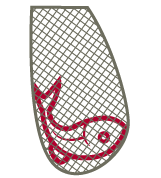Laboratory
Non-Lethal Fish Tissue Sampling For Metals
Mar. 3 2019
Insight into the exposure of aquatic organisms such as fish to anthropogenic pollutants is important in gauging both aquatic ecosystem health and the potential for human exposure to contaminants through fish consumption. Conventional methods for collecting fish tissue require the fish to be sacrificed.
Historically, thousands of fish have been harvested annually to support monitoring programs, particularly for heavy metal determination. While high numbers of fish samples per site are necessary to provide robust, statistically significant data sets, there is growing concern that the removal of selected species in such numbers may in itself be harmful to the sustainability of the studied environments. Given these realities, there is an increased interest in identifying valid approaches for non-lethal fish tissue sampling.
Non-Lethal Tissue Sampling
Techniques have been developed for surgical removal of a tissue plug from the fish while under sedation, followed by sealing of the wound and immediate release. The biopsy plug method uses clean equipment and supplies each time a sample is collected, reducing the risk of sample contamination. It has been demonstrated [1] that non-lethal sampling by removal of a biopsy plug as described in this technical bulletin does not affect fish survival. This has allowed stakeholders to introduce policies to ban or severely restrict lethal methods for sampling fish while meeting site objectives for monitoring contaminants.
Background
Historically, fish tissue sampling techniques have been simple. A specimen is caught, dissected for the tissues of interest or processed as a whole fish, and analysed for the parameters of interest. Laboratories usually require up to 25 g of tissue to accommodate long lists of analyses. For heavy metals alone, 2 – 5 g of tissue is often required.
The challenge in analysing biopsy or tissue plugs has been establishing reliable and reproducible data for low level (trace) metals from the very small sample sizes (100 – 500 mg) typical of biopsy plugs.
Bureau Veritas has validated procedures for measuring low level metals in tissue plugs of just 0.1 – 0.5 g while still achieving practical detection limits and meeting the needs of most aquatic monitoring and permitting programs.
Sampling Procedure [2]
|
|
1. Biopsy punches vary in size, with different sized punches providing different sample sizes. An 8 mm punch will provide a tissue plug of approximately 300 – 400 mg. |
|
|
2. Collect a fish of suitable size in such a way as to minimise stress or harm to the fish. |
|
|
3. Remove the scales from a small area on the left anterior dorsal side of the fish. Using a slight twisting motion, insert a clean biopsy punch into the scale-free area. |
|
|
4. Once fully inserted, gently bend or twist the punch to detach the tissue plug. Remove the punch, being careful that the tissue plug stays within the punch. |
|
|
5. Place the punch with collected tissue into the plastic sampling vial provided. Place the vial on ice in a cooler as soon as possible after sampling. Samples should be frozen within 48 hours of collection. |
|
|
6. Apply antibiotic ointment liberally to the plug cavity and surrounding area and release the fish. |
Sample Analysis
At the laboratory, the entire tissue plug is transferred to a digestion vial and weighed. At this point, the sample can be freeze-dried and processed on a dry-weight basis with the moisture content determined as part of the process. Unless a composite is being prepared from multiple samples, sample homogenization is not necessary as the entire sample is digested and analysed.
Samples are typically digested using a mixture of nitric acid, hydrochloric acid and hydrogen peroxide, which completely dissolves the tissue. Depending on the sensitivity required by the monitoring program, the resultant digestate can be analysed by ICP-OES (inductively coupled plasma/optical emission spectrophotometry), ICP-MS (ICP/single quadrupole mass spectrometry), ICP/QQQ (ICP/triple quadrupole mass spectrometry) and, if required, CVAF (cold vapour atomic fluorescence) spectrophotometry for low level mercury.
Data Reporting
Results are typically reported on a “wet-weight” or “as-received” basis in milligrams per kilograms (mg/kg) or micrograms per gram (μg/g). Results may be corrected for moisture content and reported on a “dry weight” basis. Due to the high moisture content in fish tissue (70% – 90%), the reporting limits for “dry weight” must be raised proportionately. Table 1 lists metals detection limits achievable by ICP/MS with a minimum 200 mg tissue sample.
Quality Assurance / Quality Control
Analytical batch quality is monitored by digesting and analysing reagent blanks, spiked blank (laboratory control) samples and certified reference materials (CRMs). Because the entire sample is digested, duplicate quality control is possible only if duplicate plugs are taken from a fish. However, this is not always practical and can cause undue trauma to the fish.
Laboratory Accreditation
Bureau Veritas is accredited for the determination of metals in fish tissue by the Standards Council of Canada (SCC) to ISO Guide 17025 standards.
Table 1: ICP/MS Reporting Limits (RDL) in Non-Lethal Fish Tissue Samples From 200 mg Plugs
| METALS | UNITS | PLUG (as-received) | PLUG (dry-weight*) |
|---|---|---|---|
| Total Aluminum (Al) | mg/kg | 0.5 | 2 |
| Total Antimony (Sb) | mg/kg | 0.002 | 0.008 |
| Total Arsenic (As) | mg/kg | 0.005 | 0.02 |
| Total Barium (Ba) | mg/kg | 0.01 | 0.04 |
| Total Beryllium (Be) | mg/kg | 0.002 | 0.008 |
| Total Bismuth (Bi) | mg/kg | 0.00125 | 0.005 |
| Total Boron (B) | mg/kg | 0.2 | 0.8 |
| Total Cadmium (Cd) | mg/kg | 0.00125 | 0.005 |
| Total Calcium (Ca) | mg/kg | 4 | 16 |
| Total Chromium (Cr) | mg/kg | 0.025 | 0.10 |
| Total Cobalt (Co) | mg/kg | 0.00125 | 0.005 |
| Total Copper (Cu) | mg/kg | 0.0125 | 0.05 |
| Total Iron (Fe) | mg/kg | 0.25 | 1.0 |
| Total Lead (Pb) | mg/kg | 0.00125 | 0.005 |
| Total Lithium (Li) | mg/kg | 0.1 | 0.4 |
| Total Magnesium (Mg) | mg/kg | 0.4 | 1.6 |
| Total Manganese (Mn) | mg/kg | 0.01 | 0.04 |
| Total Mercury (Hg) ICP/MS | mg/kg | 0.0125 | 0.05 |
| Total Mercury (Hg) CVAF | mg/kg | 0.002 | 0.008 |
| Total Molybdenum (Mo) | mg/kg | 0.008 | 0.032 |
| Total Nickel (Ni) | mg/kg | 0.01 | 0.04 |
| Total Phosphorus (P) | mg/kg | 2 | 8 |
| Total Potassium (K) | mg/kg | 2.5 | 10 |
| Total Selenium (Se) | mg/kg | 0.01 | 0.04 |
| Total Silver (Ag) | mg/kg | 0.00125 | 0.005 |
| Total Sodium (Na) | mg/kg | 2.5 | 10 |
| Total Strontium (Sr) | mg/kg | 0.0125 | 0.05 |
| Total Thallium (Tl) | mg/kg | 0.0004 | 0.0015 |
| Total Tin (Sn) | mg/kg | 0.02 | 0.08 |
| Total Titanium (Ti) | mg/kg | 0.125 | 0.5 |
| Total Uranium (U) | mg/kg | 0.0004 | 0.0016 |
| Total Vanadium (V) | mg/kg | 0.02 | 0.08 |
| Total Zinc (Zn) | mg/kg | 0.2 | 0.8 |
*RDLs (dry weight) based on a sample containing 75% moisture, i.e., 25% solids
References
[1] Ackerson, J.R. et al.: “Implementation of a Non-lethal Biopsy Punch Monitoring Program for Mercury in Smallmouth Bass, Micropterus dolomieu Lacepede, from the Eleven Point River, Missouri”. Bull. Environ. Contam. Toxicol. (2014) 92: 125-131
[2] Crawford, B.A. et al.: “Technique for Rapidly Taking Samples of Skeletal Muscle from Live Adult Steelhead Trout”. The Progressive Fish-Culturist (1977) 39:3, 125





